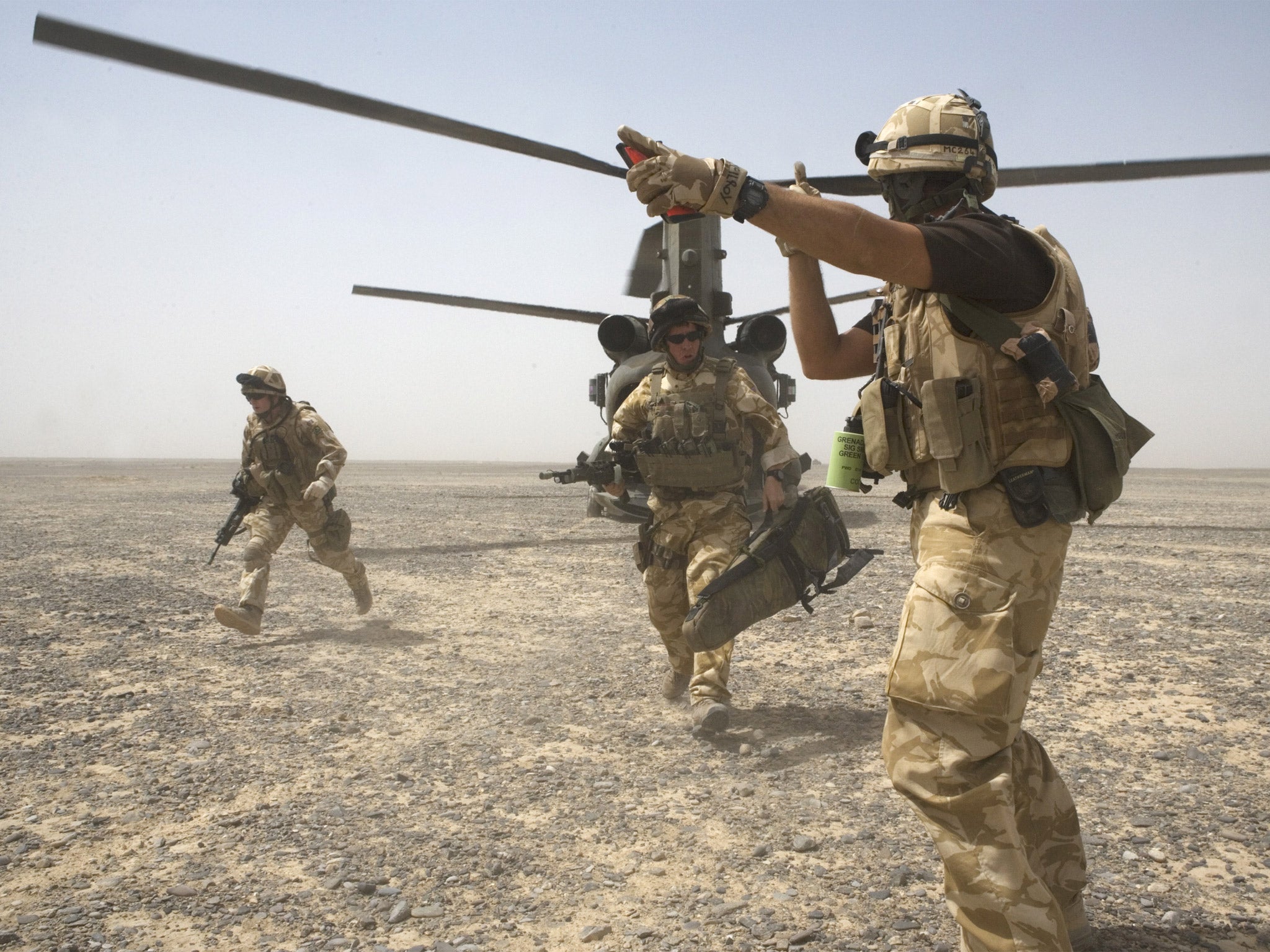British to reduce forces in Afghanistan to half their current size by end of 2013

British forces in Afghanistan will be reduced to just over half their current size by the end of next year as the exit strategy from the long and costly war gets underway.
The total UK contingent will be reduced from its current strength of 9,500 to around 5,000 after the end of the next summer’s fighting season, it is expected, with further and escalating decreases taking place with each brigade sent to Helmand.
David Cameron will make the announcement today. Final details, however, are still being worked out with partners in Nato, especially the Americans.
The scale of British disengagement will depend to a large extent on what the US administration decides: the Americans, in turn, are said to be accelerating their pace of withdrawal after commanders on the ground claimed that the Afghan army and police are making faster progress than expected.
Barack Obama has indicated that he will make up his mind about American troop numbers by the end of the year. Diplomatic sources said that although the President is currently engaged in dealing with the Connecticut school massacre, he will have decided by the time he meets the Afghan president Hamid Karzai in Washington in early January.
The Americans currently have 60,000 troops in the country; 23,000 were withdrawn this year, following 11,000 in the previous 12 months. The US Defence Secretary Leon Panetta, whose recommendation will have a key bearing on President Obama’s thinking, is said to have been persuaded towards a sizeable pull-out after consulting senior officer.
One commander, Major General Robert Abrams, insisted that Afghan forces had made “astounding” gains in districts around Kandahar while another, Maj Gen Larry Nicholson, the deputy chief of staff of Isaf (the International Security Assistance Force to Afghanistan), maintained that the Taliban had failed to regain lost ground.
Things had improves so much, he declared, that US Marines based alongside the British in Helmand were complaining of boredom because there was so little fighting to be done nowadays.
The Afghan view is somewhat different, with persistent reports of flight of capital due to apprehension about the insurgents taking over swathes of the country when Western forces end combat operations in 2014.
Afghan commanders have repeatedly stated that the international forces may be leaving too soon and the public announcement of their date of departure sends the wrong signal to the both the enemy and allies.
Nevertheless the British Prime Minister, who inherited a war he does not like, will seize on the American lead to reduce the UK presence in the conflict at a faster rate, say Whitehall sources.
Senior members of the Cabinet, including George Osborne, have been pressing for a drastic cut in the size of the force and, even, an immediate retreat.
So far 438 members of British forces have been killed in Afghanistan. The Chancellor and other ministers opposed to the war point out that it is costing £2.5 billion a year, coming to £20bn by 2014.
Yet, while signalling an accelerated departure from Afghanistan, the Prime Minister has become the foremost “hawk” on Syria at meetings of the National Security Council, stressing that the UK must play a more active role in helping the rebels against the Assad regime. The Chief of Defence Staff, General Sir David Richards, recently hosted a meeting of senior military officers in the region, as well as the US and France, to draw up plans for a possible intervention.
The US will also expect Britain to pay its share of aid to the Afghan government after the withdrawal in two years’ time, estimated to be around $10bn (£6.2bn) a year. Elements of Western military presence, including air power and special forces, are also due to remain in the country after the ground combat mission had ended.
Conflict timeline: Decade of war
October 2001 Britain and America launch air strikes on Afghanistan
December 2001 Hamid Karzai sworn in as head of interim government.
August 2003 Nato takes over responsibility for security in Kabul.
January 2006 Nato announces Britain will lead international force in Helmand with a 3,300-strong force.
June 2008 British troops increase to 8,030.
October 2009 Gordon Brown increases troop numbers to 9,500.
December 2009 US troop numbers increase to 100,000.
May 2012 Nato summit endorses plans to withdraw foreign combat troops within two years.
Join our commenting forum
Join thought-provoking conversations, follow other Independent readers and see their replies
Comments